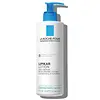What's inside
What's inside
 Key Ingredients
Key Ingredients

 Benefits
Benefits

 Concerns
Concerns

 Ingredients Side-by-side
Ingredients Side-by-side

Water
Skin ConditioningButyrospermum Parkii Butter
Skin ConditioningGlycerin
HumectantSorbitan Stearate
EmulsifyingParaffinum Liquidum
EmollientNiacinamide
SmoothingVitis Vinifera Seed Oil
EmollientAluminum Starch Octenylsuccinate
AbsorbentDimethicone
EmollientCera Alba
EmollientSorbitan Tristearate
EmulsifyingCarbomer
Emulsion StabilisingSodium Hydroxide
BufferingPoloxamer 338
EmulsifyingAmmonium Polyacryloyldimethyl Taurate
Emulsion StabilisingDisodium EDTA
Sucrose Cocoate
EmulsifyingCaprylyl Glycol
EmollientCitric Acid
BufferingT-Butyl Alcohol
PerfumingCetyl Palmitate
EmollientBHT
AntioxidantPentaerythrityl Tetra-Di-T-Butyl Hydroxyhydrocinnamate
AntioxidantChlorhexidine Digluconate
AntimicrobialWater, Butyrospermum Parkii Butter, Glycerin, Sorbitan Stearate, Paraffinum Liquidum, Niacinamide, Vitis Vinifera Seed Oil, Aluminum Starch Octenylsuccinate, Dimethicone, Cera Alba, Sorbitan Tristearate, Carbomer, Sodium Hydroxide, Poloxamer 338, Ammonium Polyacryloyldimethyl Taurate, Disodium EDTA, Sucrose Cocoate, Caprylyl Glycol, Citric Acid, T-Butyl Alcohol, Cetyl Palmitate, BHT, Pentaerythrityl Tetra-Di-T-Butyl Hydroxyhydrocinnamate, Chlorhexidine Digluconate
Water
Skin ConditioningGlycerin
HumectantButyrospermum Parkii Butter
Skin ConditioningOctyldodecyl Olivate
Skin ConditioningCaprylic/Capric Triglyceride
MaskingIsopropyl Palmitate
EmollientCetyl Alcohol
EmollientGlyceryl Stearate Se
EmulsifyingSqualane
EmollientAdansonia Digitata Seed Oil
EmollientAvena Sativa Kernel Flour
AbrasiveVegetable Oil
Skin ConditioningSodium Stearoyl Lactylate
EmulsifyingGlycine Soja Sterols
EmollientSodium Carboxymethyl Beta-Glucan
CleansingSodium Lactate
BufferingCarnosine
Skin ConditioningLactic Acid
BufferingPotassium Carbonate
BufferingTocopheryl Acetate
AntioxidantSodium Hyaluronate
HumectantCetearyl Alcohol
EmollientCeteareth-20
CleansingAcrylates/C10-30 Alkyl Acrylate Crosspolymer
Emulsion StabilisingStearic Acid
CleansingDisodium EDTA
Sodium Hydroxide
BufferingTocopherol
AntioxidantEthylhexylglycerin
Skin ConditioningPhenoxyethanol
PreservativeWater, Glycerin, Butyrospermum Parkii Butter, Octyldodecyl Olivate, Caprylic/Capric Triglyceride, Isopropyl Palmitate, Cetyl Alcohol, Glyceryl Stearate Se, Squalane, Adansonia Digitata Seed Oil, Avena Sativa Kernel Flour, Vegetable Oil, Sodium Stearoyl Lactylate, Glycine Soja Sterols, Sodium Carboxymethyl Beta-Glucan, Sodium Lactate, Carnosine, Lactic Acid, Potassium Carbonate, Tocopheryl Acetate, Sodium Hyaluronate, Cetearyl Alcohol, Ceteareth-20, Acrylates/C10-30 Alkyl Acrylate Crosspolymer, Stearic Acid, Disodium EDTA, Sodium Hydroxide, Tocopherol, Ethylhexylglycerin, Phenoxyethanol
Ingredients Explained
These ingredients are found in both products.
Ingredients higher up in an ingredient list are typically present in a larger amount.
This ingredient is also known as shea butter. It is an effective skin hydrator and emollient.
Emollients help soothe and soften your skin. It does this by creating a protective film on your skin. This barrier helps trap moisture and keeps your skin hydrated. Emollients may be effective at treating dry or itchy skin.
Shea butter is rich in antioxidants. Antioxidants help fight free-radicals, or molecules that may harm the body. It is also full of fatty acids including stearic acid and linoleic acid. These acids help replenish the skin and keep skin moisturized.
While Shea Butter has an SPF rating of about 3-4, it is not a sunscreen replacement.
Shea butter may not be fungal acne safe. We recommend speaking with a professional if you have any concerns.
Learn more about Butyrospermum Parkii ButterDisodium EDTA plays a role in making products more stable by aiding other preservatives.
It is a chelating agent, meaning it neutralizes metal ions that may be found in a product.
Disodium EDTA is a salt of edetic acid and is found to be safe in cosmetic ingredients.
Learn more about Disodium EDTAGlycerin is already naturally found in your skin. It helps moisturize and protect your skin.
A study from 2016 found glycerin to be more effective as a humectant than AHAs and hyaluronic acid.
As a humectant, it helps the skin stay hydrated by pulling moisture to your skin. The low molecular weight of glycerin allows it to pull moisture into the deeper layers of your skin.
Hydrated skin improves your skin barrier; Your skin barrier helps protect against irritants and bacteria.
Glycerin has also been found to have antimicrobial and antiviral properties. Due to these properties, glycerin is often used in wound and burn treatments.
In cosmetics, glycerin is usually derived from plants such as soybean or palm. However, it can also be sourced from animals, such as tallow or animal fat.
This ingredient is organic, colorless, odorless, and non-toxic.
Glycerin is the name for this ingredient in American English. British English uses Glycerol/Glycerine.
Learn more about GlycerinSodium Hydroxide is also known as lye or caustic soda. It is used to adjust the pH of products; many ingredients require a specific pH to be effective.
In small amounts, sodium hydroxide is considered safe to use. However, large amounts may cause chemical burns due to its high alkaline.
Your skin has a natural pH and acid mantle. This acid mantle helps prevent harmful bacteria from breaking through. The acid mantle also helps keep your skin hydrated.
"Alkaline" refers to a high pH level. A low pH level would be considered acidic.
Learn more about Sodium HydroxideWater. It's the most common cosmetic ingredient of all. You'll usually see it at the top of ingredient lists, meaning that it makes up the largest part of the product.
So why is it so popular? Water most often acts as a solvent - this means that it helps dissolve other ingredients into the formulation.
You'll also recognize water as that liquid we all need to stay alive. If you see this, drink a glass of water. Stay hydrated!
Learn more about Water